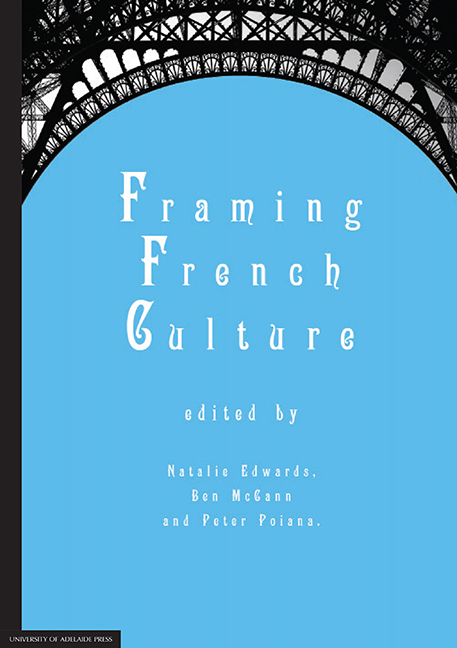Book contents
- Frontmatter
- Contents
- Introduction
- Part 1 Historical framings
- 2 Colonial vision: French voyager-artists, Aboriginal subjects and the British Colony at Port Jackson
- 3 An artist in the making: The early drawings of Charles-Alexandre Lesueur during the Baudin expedition to Australia
- 4 Framing New Holland or framing a narrative? A representation of Sydney according to Charles-Alexandre Lesueur
- 5 The Artwork of the Baudin expedition to Australia (1800-1804): Nicolas-Martin Petit's 1802 portrait of an Aboriginal woman and child from Van Diemen's Land
- Part 2 Cultural icons and cinematic framings
- Part 3 Photographic framings
- Part 4 Artistic framings
4 - Framing New Holland or framing a narrative? A representation of Sydney according to Charles-Alexandre Lesueur
from Part 1 - Historical framings
Published online by Cambridge University Press: 05 February 2016
- Frontmatter
- Contents
- Introduction
- Part 1 Historical framings
- 2 Colonial vision: French voyager-artists, Aboriginal subjects and the British Colony at Port Jackson
- 3 An artist in the making: The early drawings of Charles-Alexandre Lesueur during the Baudin expedition to Australia
- 4 Framing New Holland or framing a narrative? A representation of Sydney according to Charles-Alexandre Lesueur
- 5 The Artwork of the Baudin expedition to Australia (1800-1804): Nicolas-Martin Petit's 1802 portrait of an Aboriginal woman and child from Van Diemen's Land
- Part 2 Cultural icons and cinematic framings
- Part 3 Photographic framings
- Part 4 Artistic framings
Summary
The artists on the Baudin expedition, Charles-Alexandre Lesueur and Nicolas-Martin Petit, left us a substantial legacy in terms of the drawings of antipodean peoples, landscapes and coastal profiles which they executed during and after their voyage of scientific discovery to Australia between 1800 and 1804. Many of these works are now well known, thanks to the publication of the various Atlases of the official account of the expedition, the Voyage de découvertes aux Terres australes, and their modern facsimile editions. Other images, which have remained unpublished, demand to be better known, given the energy that emanates from them, their sense of engagement with their subjects, and, not least, the information encoded within them of the new worlds and people they encountered. Although there are some exquisite watercolours of antipodean marine life to be found in the Muséum National d'Histoire Naturelle in Paris, by far the most important repository of the unpublished drawings and sketches of Lesueur and Petit is the Lesueur Collection in the Muséum d'Histoire Naturelle of Le Havre. Within the Australian subjects of the collection, one vividly coloured map stands out, as much for its attractiveness as for its picturesque detail: this is the watercolour entitled ‘Nouvelle Hollande’, executed by Charles-Alexandre Lesueur (Figure 4.1). Although the form and presentation of its title, ‘Nouvelle Hollande’, indicate that Lesueur originally intended this work for the Atlas of the official account of the Voyage, it ultimately remained unpublished. Given the formal beauty of the image, we are quite naturally led to regret its exclusion from the Atlas, especially since the engraved map of Sydney that does feature in it singularly lacks the aesthetic appeal of the watercolour (Figure 4.2).
However, this substitution is only too easily explained. Unlike the engraving, which Lesueur drew to scale, based on a survey by the expedition's hydrographer, Charles Boullanger, the watercolour bears no such endorsement as to its accuracy. As Robert Irving has pointed out: ‘Lesueur's map is exquisite, but he was no surveyor. The map is wrong in a number of respects, including the waterline’. Indeed, is it even a map? Paul Carter describes Lesueur's work more generally as ‘poised between rival visions, between the first impressions appropriate to a logbook and the scientific figures fit to adorn a scientific treatise’.
- Type
- Chapter
- Information
- Framing French Culture , pp. 81 - 102Publisher: The University of Adelaide PressPrint publication year: 2015



